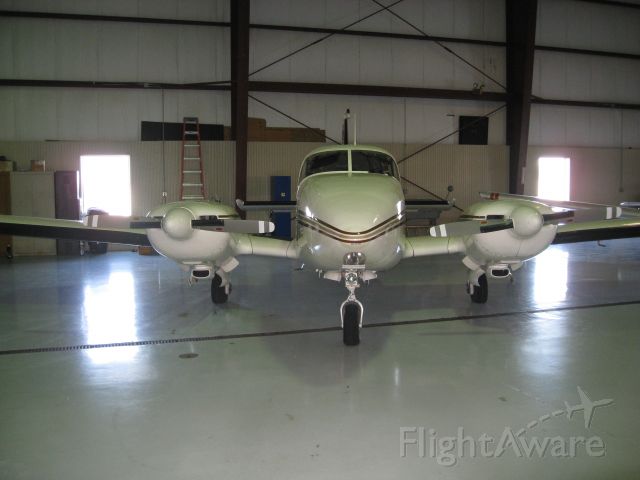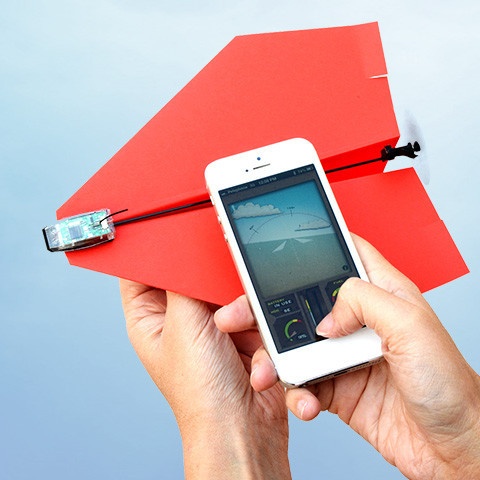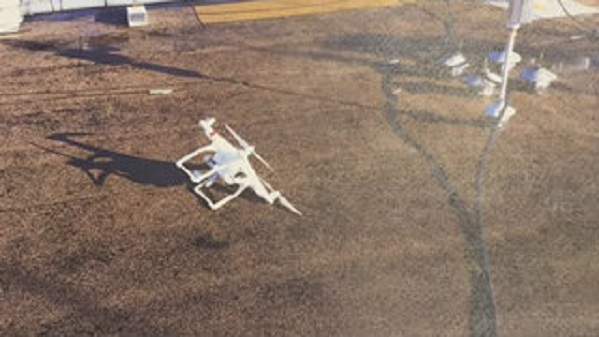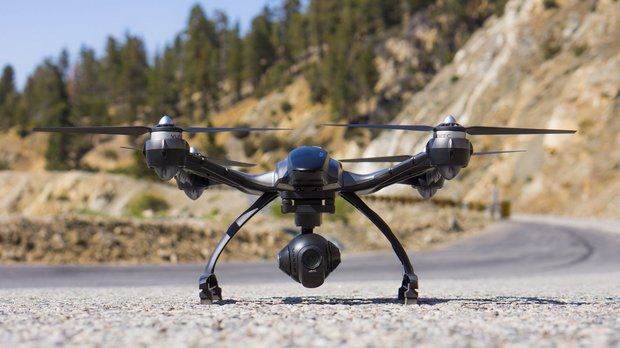When people spot an unmanned aerial vehicle, more commonly known as a drone, it can be unnerving for some who wonder if they’re under surveillance or what the hovering contraption is doing overhead.
Jeff Scholl predicts that in just a few years, these unmanned aerial vehicles will be such as common as birds flying through the sky.
Scholl, the chief pilot for Gravity Shots, has been working in aerial cinematography since the 1990s. His career has taken him around the world (except Russia) as he has mastered piloting these small, precision aircraft for production companies.
Gravity Shots, located on Montana 40 near Whitefish, is primarily a production company, shooting high-resolution aerial footage for television production companies such as The History Channel, ESPN and Fox News.
“They call me the drone guy,” Scholl said. “I’m a freelancer and sometimes I’m just another crew member on these jobs.”
His wife, Adele, handles the controls of the gimbal, the mechanism that controls the camera angle and stability while the drone is airborne. Adele came to Montana by way of Colorado, having moved for school from Virginia.
“Women are a huge minority in the film industry,” she said. “It’s kind of foreign to show up on set and gain a different respect from the crew and producers. But Montana is the prettiest place we’ve filmed and that’s why we live here.”
Adele is the chief camera operator and video and photograph editor for Gravity Shots. The website lists her as a pilot-in-training as well.
Jeff started Gravity Shots nearly 16 years ago. His father flew F-18s, so he grew up in the aviation community. A cameraman since owning his first Polaroid camera at the age of 9, Scholl wanted to get a better view from up above.
As the modern unmanned aerial vehicle emerged, Scholl was among the pioneers who kept cinematography attached to the product. He said he could remember a time when he could count all the drone production pilots in the country on one hand. In the last two years, he said, the technology has grown exponentially. Several companies send new, sometimes prototype models to Scholl to test before they are released on the market.
“Every time you turn around there’s a new model,” Scholl said while piloting a Freefly Alta model that was released just two weeks ago. “Give it another week, and they’ll probably have made a Chinese knockoff [of this model] somewhere.”
The rise of commercial drones led to a host of federal regulations that define where and at what altitude commercial unmanned aerial vehicles are allowed. These regulations are constantly being amended. Since fall of 2014 drone pilots need to obtain a Section 333 exemption grant, certificate of operation, aircraft registration and airman piloting certificate all with the Federal Aviation Administration before piloting an unmanned aerial vehicle.
Hobbyists don’t require the 333 exemption, but have tighter regulations. They must fly under 400 feet, can’t fly within a 3-mile range of an airport and must keep the aircraft within sight of the pilot.
Commercial pilot restrictions are similar, but they are allowed to fly up to 1,200 feet.
“In the past, it was just the Wild West; no one knew what was going on,” Scholl said. “What they were trying to do was lump this toy helicopter in with full-scale aircraft. But a judge said, ‘if that’s true, then a paper airplane is an aircraft.’
“What happens now is the 333 has become a requirement to work on the job,” he added.
The reason for regulations is airspace.
Scholl said it’s usually the hobbyists who are involved with collisions with airplanes or helicopters. Commercial pilots, he said, don’t have much interest in sending a drone 8,000 feet into the air.
It’s almost standard now, Scholl said, for a production company to have a fully licensed unmanned aerial vehicle pilot on staff. With advancements in design and functionality, Scholl has been able to maintain the work that gets him the bigger jobs. The design has been advancing in the direction of lighter drones, longer battery life and a better stabilization for cameras.
The gimbal is a gyro-stabilizing mechanism that holds the camera beneath the drone. Even while Scholl swings the drone from side to side, the monitor held by Adele shows a smooth camera motion that maintains its focus.
“Before this system it would all be throw-away footage,” he said. “Now it’s smooth and professional; it’s very easy.”
Another strong change in the design is the ability to quickly fold up and move to the next shooting spot. Staying mobile has been Scholl’s goal.
“Most of my stuff is jumping on a snowmobile or four-wheeler,” Scholl said. “The best part about where we operate is we can test things like flight time or how these cameras operate in the cold or heat.”
Recently the Scholls have been contracted to take photographs for local real estate companies.
The company has been contracted for much larger productions such as a commercial that recently brought Scholl to Florida to fly drones between skyscrapers in Miami.
The growing interest in drones has created a retail market for them, even in the Flathead Valley.
Quadrocopter, of which Scholl is a part owner, is a retail company that sells several models of unmanned aerial vehicles, flight training, and multi-rotor upgrade and repairs. The company, which shares space with Gravity shots at the Montana 40 location, was started in 2006 by Adam Paugh and Florian Seeger. Needing a licensed pilot, Quadrocopter owners signed Scholl into the company as its chief pilot in 2010.
Matt Ragan, a pilot for Quadrocopter and his own company, Bird’s Eye of Big Sky, brought his unmanned aerial vehicles to the Northwest Montana Fair to film the rodeo.
Quadrocopter soon will offer its services in Los Angeles and New York, rather than shuttling clients to Kalispell for flight training.
The increasing functionality of drones is emerging every day. Amazon has said it hopes to use drones to deliver items to consumers.
Lifeguards may soon be able to fly a flotation device out to a struggling swimmer via a drone.
“The military probably isn’t going to develop another fighter with a pilot inside,” Scholl said. “Why would they?”
In a year, Scholl believes the 333 exemption will be outdated, as the Federal Aviation Administration may just require some form of piloting experience. For now, Scholl is simply enjoying the ride as the market takes off.
“Plus, it’s just fun,” he said. “Every day is in adventure.”
http://www.dailyinterlake.com/business_and_finance/local_montana/drone-companies-flourishing-in-the-flathead/article_547f76fc-4ea6-11e5-bdf3-4bf2cb1f8e5d.html

 Earlier this year, the
Earlier this year, the 







